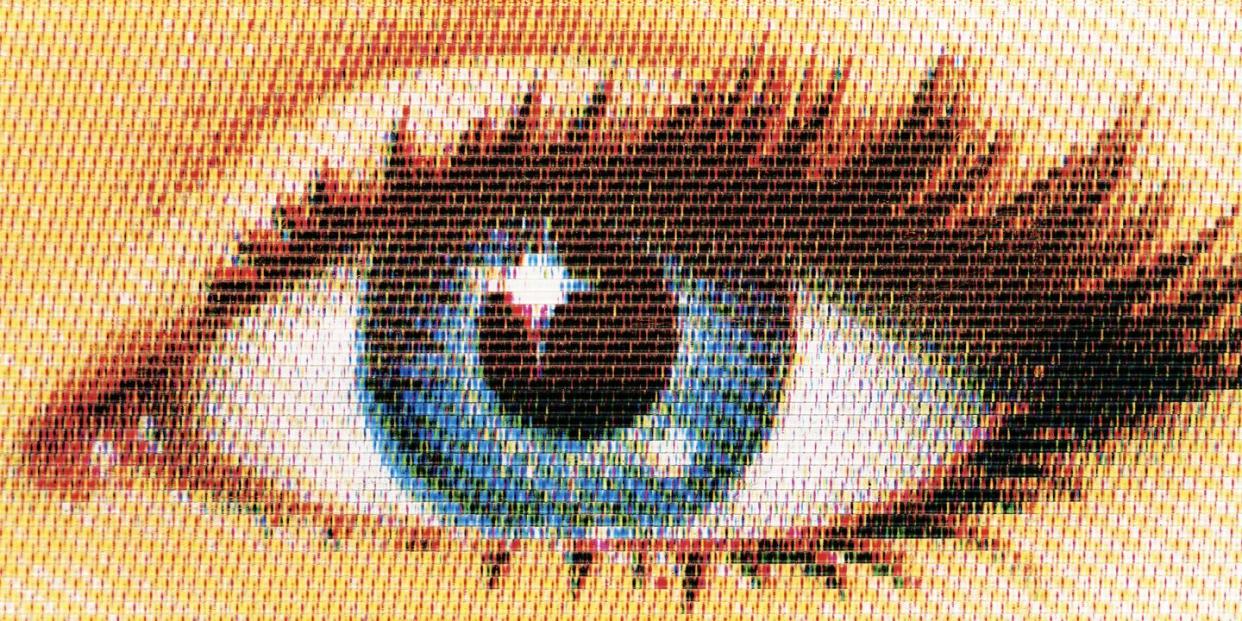Everything You See Is From 15 Seconds in the Past, New Research Claims

A new experiment reveals that our vision is up to 15 seconds behind real time.
Our eyes smooth out how we see the world, but scientists don't fully know how.
This experiment helps narrow it down to an idea called "serial dependence."
Open the camera app on your phone and start recording a video. Place the screen right in front of your eyes and try to use the live footage as a viewfinder. Tricky, right? The shapes, colors, and motion in the video are jarring. Scientists say this exercise is a close approximation of the messy visual data that our eyes constantly bombard our brain with. So how exactly do we see without feeling dizzy or nauseated?
In a new paper published last month in the journal Science Advances, researchers from the University of Aberdeen and the University of California, Berkeley describe a "previously unknown visual illusion" that helps us smooth out what we see over time.
👁 Science is on our side. We'll help you understand it all.
"Instead of analysing every single visual snapshot, we perceive in a given moment an average of what we saw in the past 15 seconds," the authors note in a piece published in The Conversation, a website where scientists routinely detail their latest work. "So, by pulling together objects to appear more similar to each other, our brain tricks us into perceiving a stable environment. Living 'in the past' can explain why we do not notice subtle changes that occur over time."
This "illusion of visual stability" is an idea that may require a bit of explaining before it makes intuitive sense. Consider our eyes' ability to focus on items some distance away, remaining stable in their ability to "lock on" to objects in their path. Now, think about what happens to your eyeballs, themselves, while they're focused; they must move all around in order to maintain that smooth feeling while they focus on objects off in the distance—like a gyroscope that always remains upright.
As the researchers put it in their paper:
Retinal images continuously fluctuate because of many sources of internal and external noise ranging from retinal image motion, occlusions and discontinuities, lighting changes, and perspective changes, among many other sources of noise. However, the objects do not appear to jitter, fluctuate, or change identity from moment to moment.
There are different theories to explain how our eyes and brain work together to smooth out what we see around us. Those include "change blindness" (when a stimulus changes but we don't notice it) and "inattentional blindness" (our failure to notice a visible object because our attention is focused elsewhere), factors that would explain our relative lack of jitters despite the kaleidoscope-like mess of our perception. Those theories have inspired real technologies like smoothing software for smartphone videos. But in this study, the researchers sought to better understand a different theory known as "serial dependence."
"Serial dependence causes objects at any moment to be misperceived as being more similar to those in the recent past," the researchers explain. That means our brains compare the live picture from our eyes to images from the very recent past, mistakenly finding that the two are the same. This creates a smoothing effect by reducing the overall number of "frames" in play as we look at and perceive objects.
To test this theory, the researchers built an experiment (above) where people watched a progressively changing image that either shows a face morphing from young to old or old to young. If our brains are locked in the very recent past, they'll register a lag between the age we perceive the face to be in the changing picture versus the real age of the face in the picture.
To further test the specifics of serial dependence, the researchers put growing intervals of time in the middle of the moving picture, starting at one second and going all the way up to 15 seconds while still registering the same illusory misgauging of the picture's age. This means our brains are capable of smoothing out images that are as old as 15 seconds ... or possibly even older.
So the next time you take a shaky phone video, remember that your brain is working extra hard to stabilize your visual field across 15 or more seconds to keep your picture smooth and uninterrupted.
You Might Also Like

